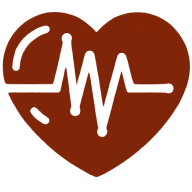How Do You Diagnose a Cardiac Condition With Less Common Symptoms?
Discovering underlying cardiac conditions often requires more than a routine check-up. Advanced diagnostic procedures, from long-term ECG to intricate imaging techniques, unveil critical insights into the heart's hidden irregularities. These tools are pivotal in detecting signs of stress and atypical rhythms that standard exams might miss.
- Preoperative Planning for Complex Heart Cases
- Thorough Examination Uncovers Atypical Heart Issues
- Advanced Imaging Reveals Hidden Cardiac Problems
- Blood Tests Detect Early Heart Stress
- Long-term ECG Captures Irregular Heart Rhythms
- Stress Testing Exposes Subtle Cardiac Conditions
Preoperative Planning for Complex Heart Cases
Managing Complex Cases of Heart Disease: Preoperative Planning Is Key
Successful management of challenging heart disease cases begins preoperatively. In patients with coronary artery disease, the primary focus is determining the best method of revascularization, whether surgical or percutaneous, based on their specific coronary anatomy and overall cardiac function.
In cases of low ejection fraction (EF), it's critical to assess the need for mechanical circulatory support early. Options range from ECMO for full cardiopulmonary support to Impella devices for left or right ventricular assistance, depending on the patient's hemodynamic status and procedural risk.
These decisions are made through a multidisciplinary collaboration between cardiology and cardiac surgery teams, ensuring that the chosen strategy aligns with the patient's condition and procedural goals. This proactive, team-based approach improves outcomes even in the most complex cardiovascular cases.

Thorough Examination Uncovers Atypical Heart Issues
Diagnosing a cardiac condition with less common symptoms starts with a thorough physical examination and a detailed review of the patient's medical history. Doctors look for subtle signs that might point to heart issues, even if they're not typical. They ask about lifestyle factors, family history, and any unusual sensations or experiences the patient has had.
This comprehensive approach helps to create a full picture of the patient's health. It's crucial to share all information, no matter how small it might seem, as it could be the key to uncovering a hidden heart problem. Don't hesitate to speak up about any concerns or symptoms you're experiencing, even if they seem unrelated to your heart.
Advanced Imaging Reveals Hidden Cardiac Problems
Advanced imaging techniques play a vital role in diagnosing cardiac conditions with atypical symptoms. These methods, such as echocardiograms, cardiac MRIs, or CT scans, provide detailed pictures of the heart's structure and function. They can reveal issues that might not be apparent through other means, like small defects or areas of reduced blood flow.
These scans are painless and non-invasive, making them safe for most patients. The images they produce help doctors see exactly what's happening inside the heart. If your doctor recommends an imaging test, take it seriously and follow all preparation instructions carefully to ensure the best possible results.
Blood Tests Detect Early Heart Stress
Specialized blood tests are a powerful tool in identifying cardiac conditions, especially when symptoms are unusual. These tests look for specific proteins, called biomarkers, that are released into the bloodstream when the heart is under stress or damaged. Some biomarkers can indicate a problem even before symptoms appear.
The levels of these substances can help doctors determine if there's an ongoing issue and how severe it might be. Blood tests are quick, relatively simple, and can provide crucial information. Don't put off getting these tests if they're recommended; early detection can make a significant difference in treatment outcomes.
Long-term ECG Captures Irregular Heart Rhythms
Long-term ECG recordings, also known as Holter monitors or event recorders, are invaluable for catching irregular heart rhythms that might not show up during a brief doctor's visit. These devices are worn for days or even weeks, recording the heart's electrical activity continuously. They can capture infrequent or subtle rhythm disturbances that might be causing vague symptoms.
Patients typically go about their normal activities while wearing the monitor, which helps to reveal how the heart behaves in various real-life situations. If you're asked to wear a heart monitor, make sure to keep a detailed diary of your activities and any symptoms you experience during the recording period.
Stress Testing Exposes Subtle Cardiac Conditions
Stress testing is an effective method for diagnosing cardiac conditions when symptoms are less obvious. This approach involves monitoring the heart while the body is under physical stress, typically through exercise or medication that simulates exercise effects. It can reveal problems that aren't apparent when the heart is at rest, such as reduced blood flow or abnormal rhythms triggered by exertion.
Stress tests are conducted in a controlled environment with medical supervision to ensure safety. The results can provide valuable insights into how the heart performs under pressure. If a stress test is recommended, approach it as an opportunity to gain important information about your heart health and follow all pre-test instructions carefully.

